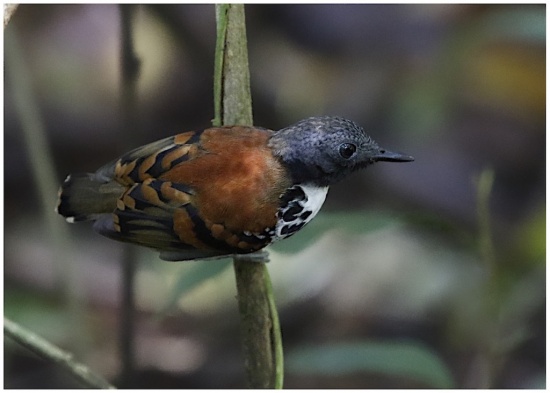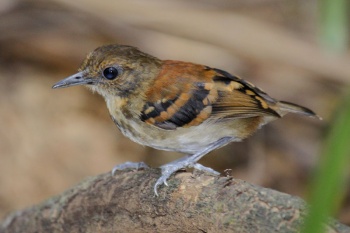- Hylophylax naevioides
Identification
10·5–11·5 cm (4-4½ in)
- White interscapular patch
Male
- Grey crown, which extends below the eye
- Dark grey feather centres
- Rufous upperparts
Distribution
Central and South America:
Central America: found in Honduras, Nicaragua, Costa Rica and Panama
South America: occurs in Colombia and Ecuador
Taxonomy
Subspecies
There are 2 subspecies[1]:
- H. n. capnitis:
- H. n. naevioides:
Habitat
Humid lowland and foothill forests and secondary growth. They are generally to be found in the undergrowth.
Behaviour
Diet
Their diet consists mostly of insects and arthropods. They will also take small lizards.
They follow army ant swarms.
Breeding
The cup nest is built by both adults.
References
- Clements, J. F., T. S. Schulenberg, M. J. Iliff, D. Roberson, T. A. Fredericks, B. L. Sullivan, and C. L. Wood. 2017. The eBird/Clements checklist of birds of the world: v2017, with updates to August 2017. Downloaded from http://www.birds.cornell.edu/clementschecklist/download/
- Handbook of the Birds of the World Alive (retrieved Dec 2017)
Recommended Citation
- BirdForum Opus contributors. (2024) Spotted Antbird. In: BirdForum, the forum for wild birds and birding. Retrieved 8 November 2024 from https://www.birdforum.net/opus/Spotted_Antbird





